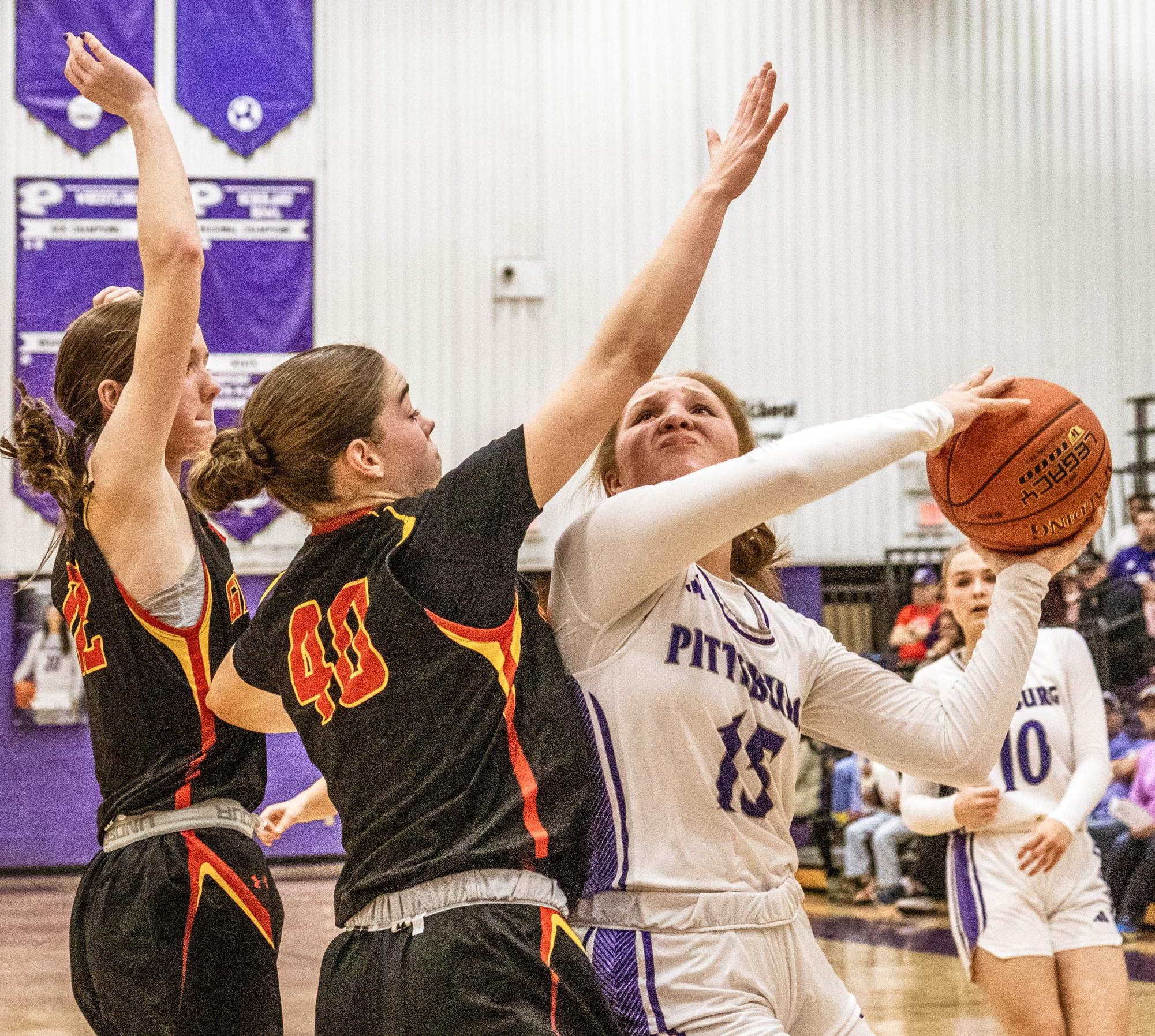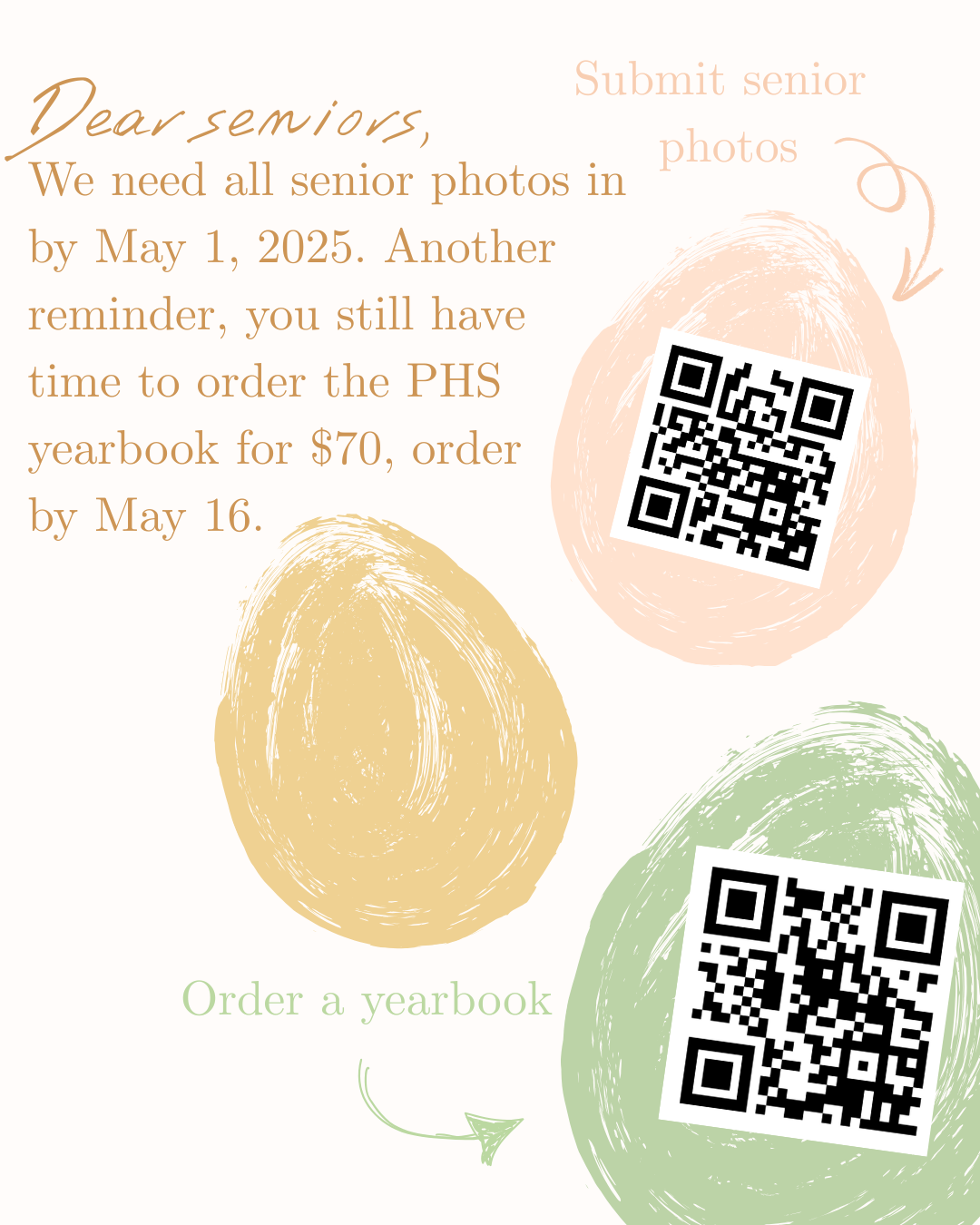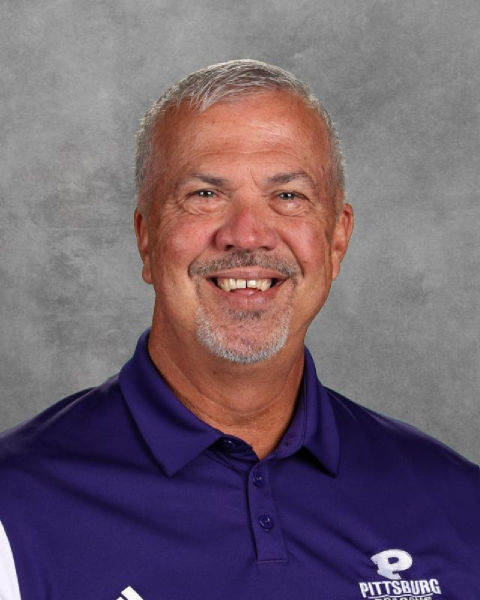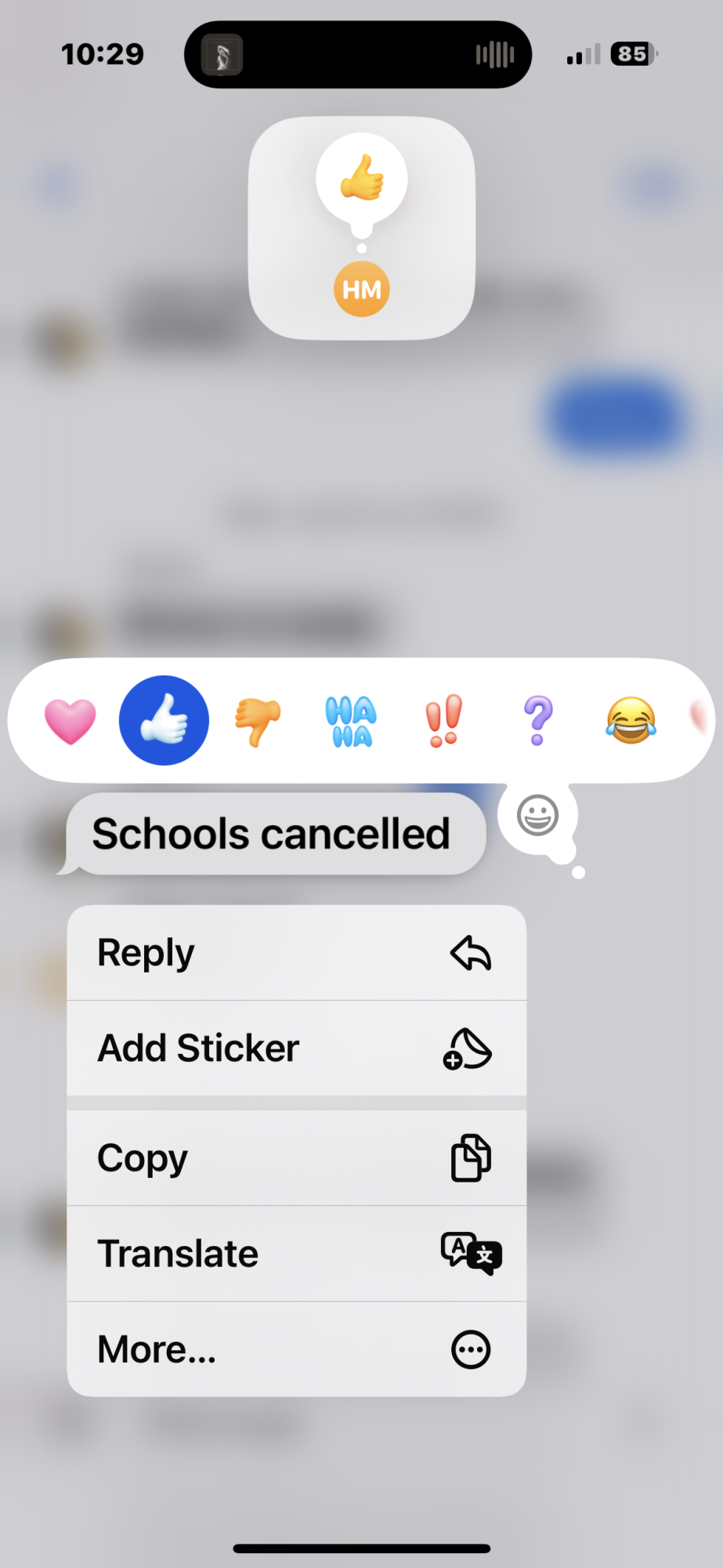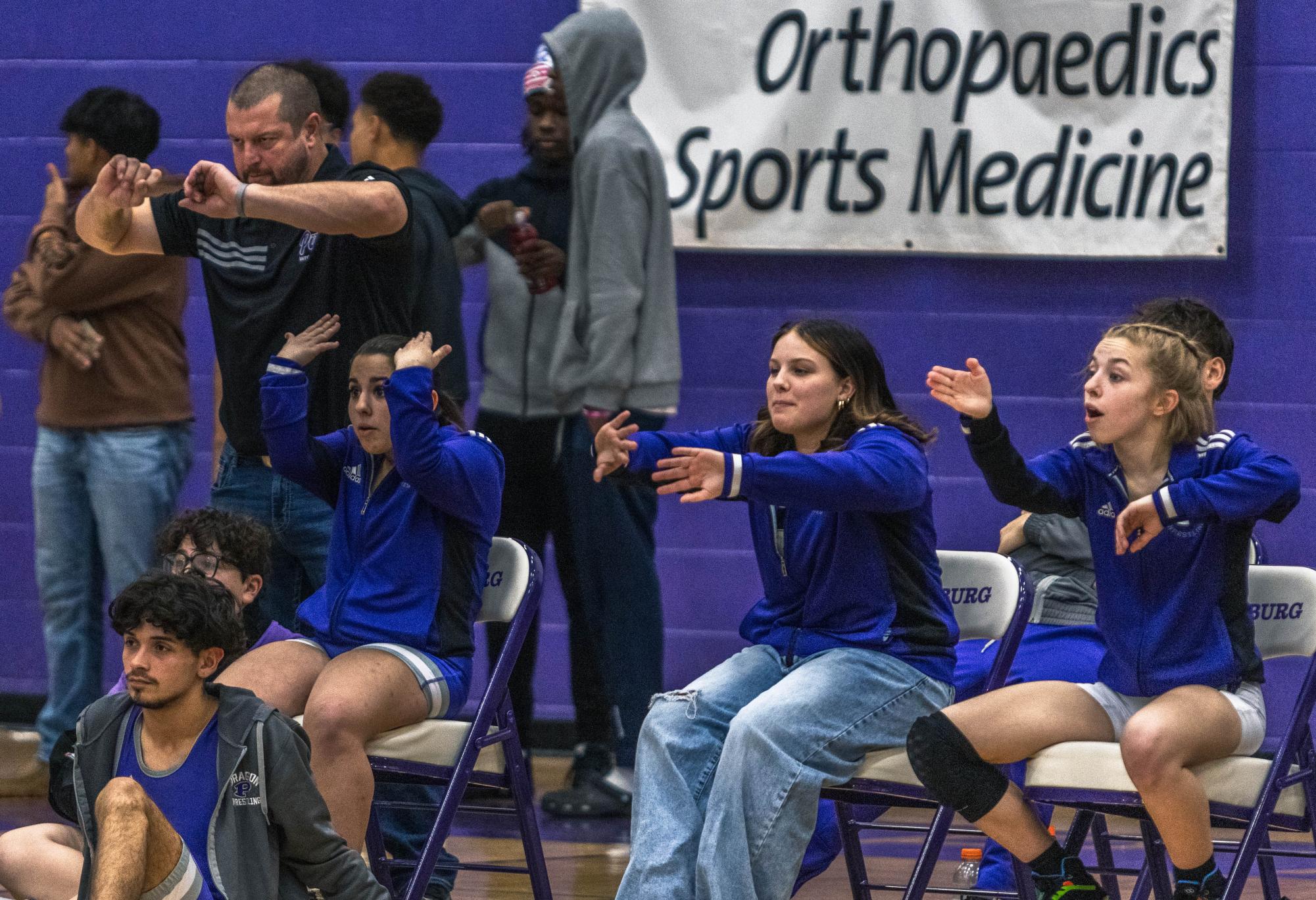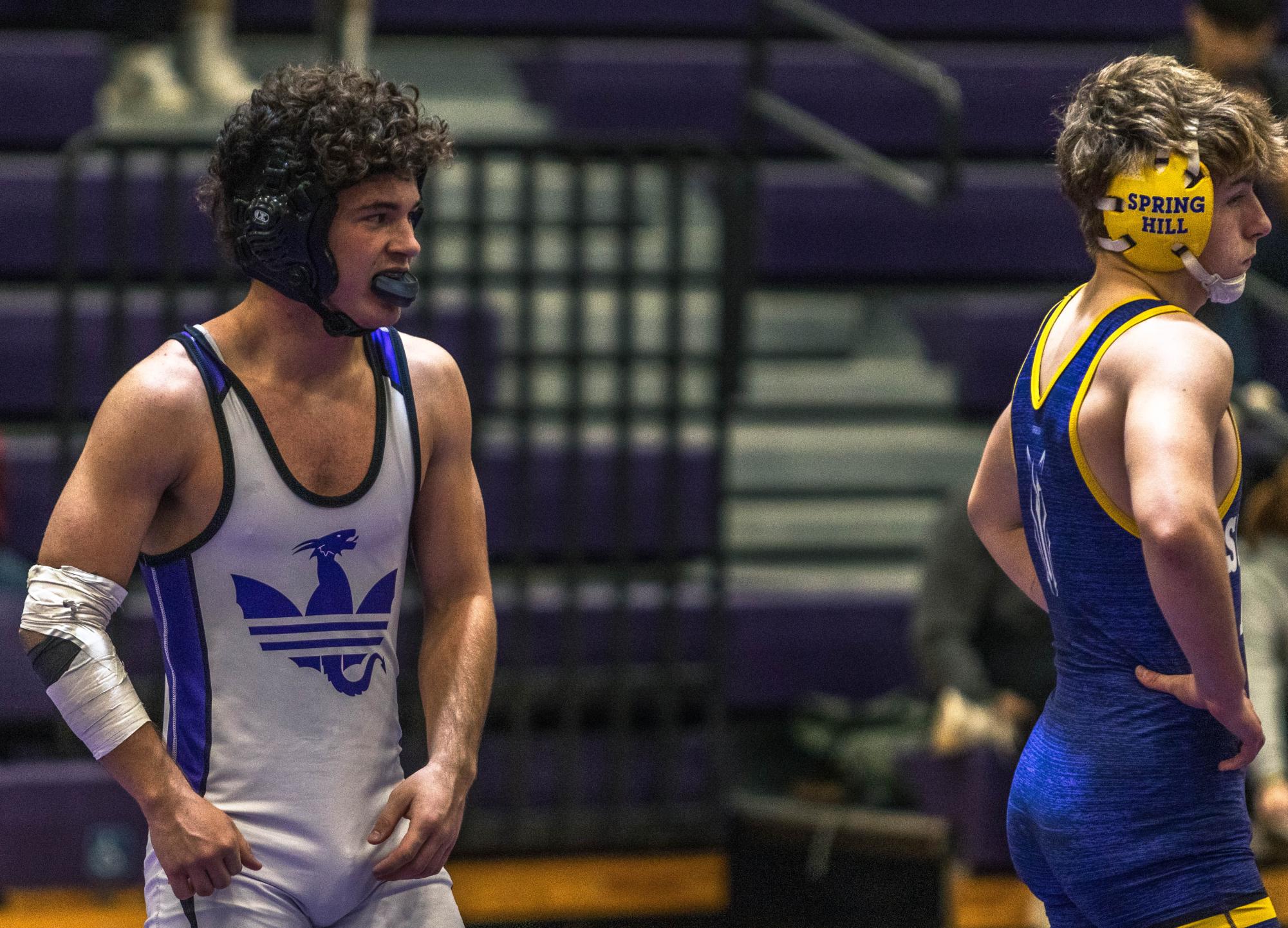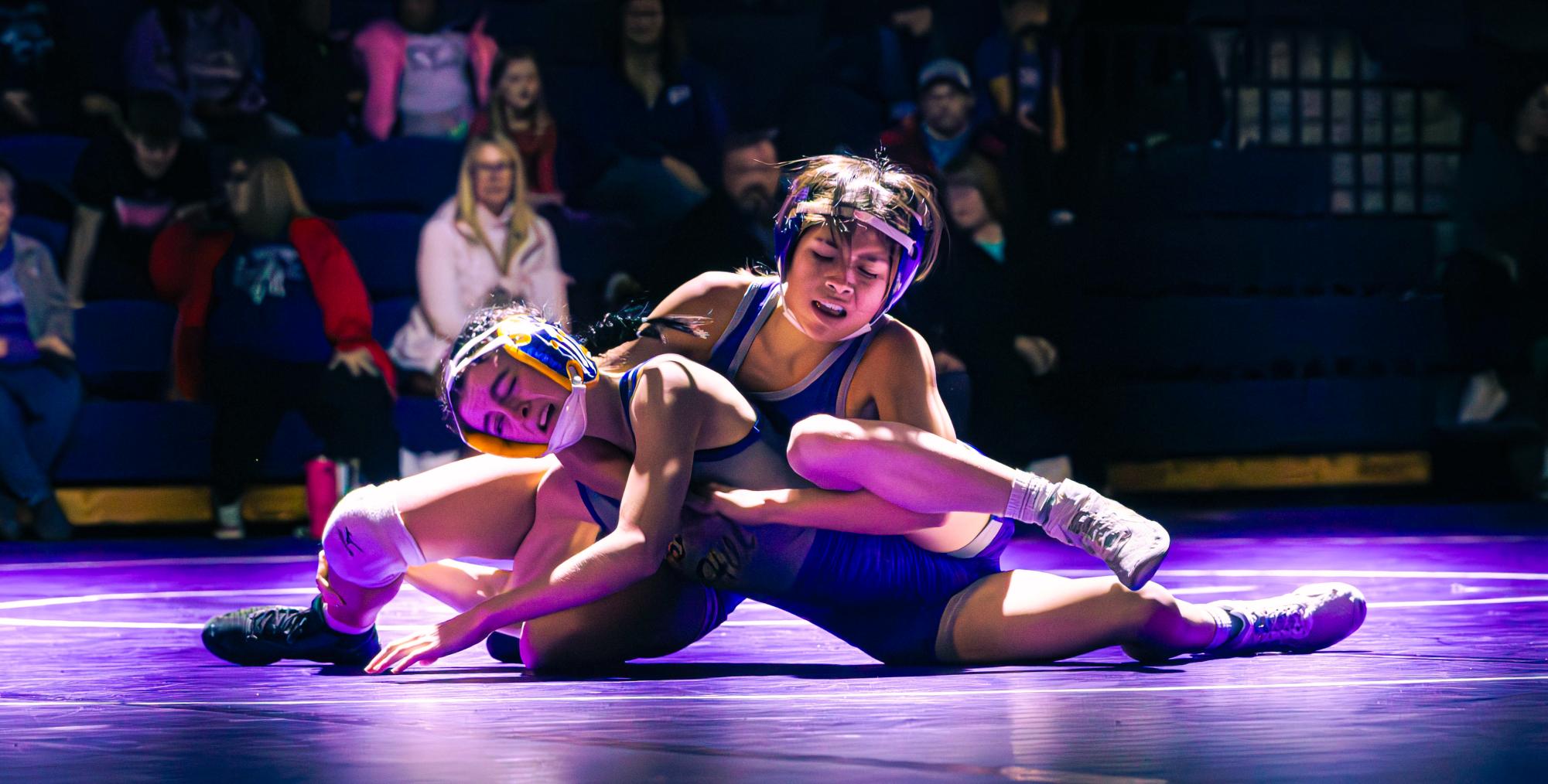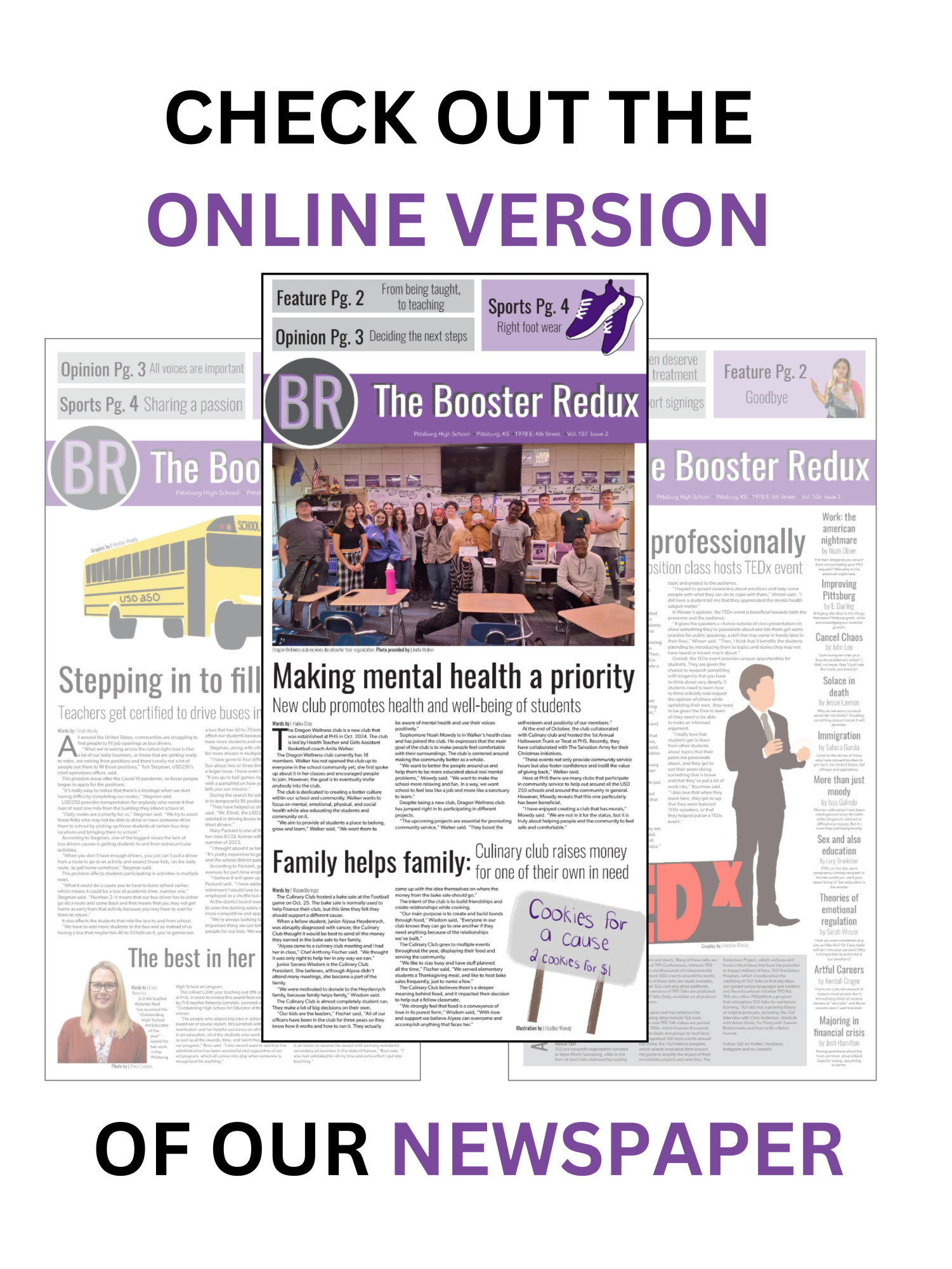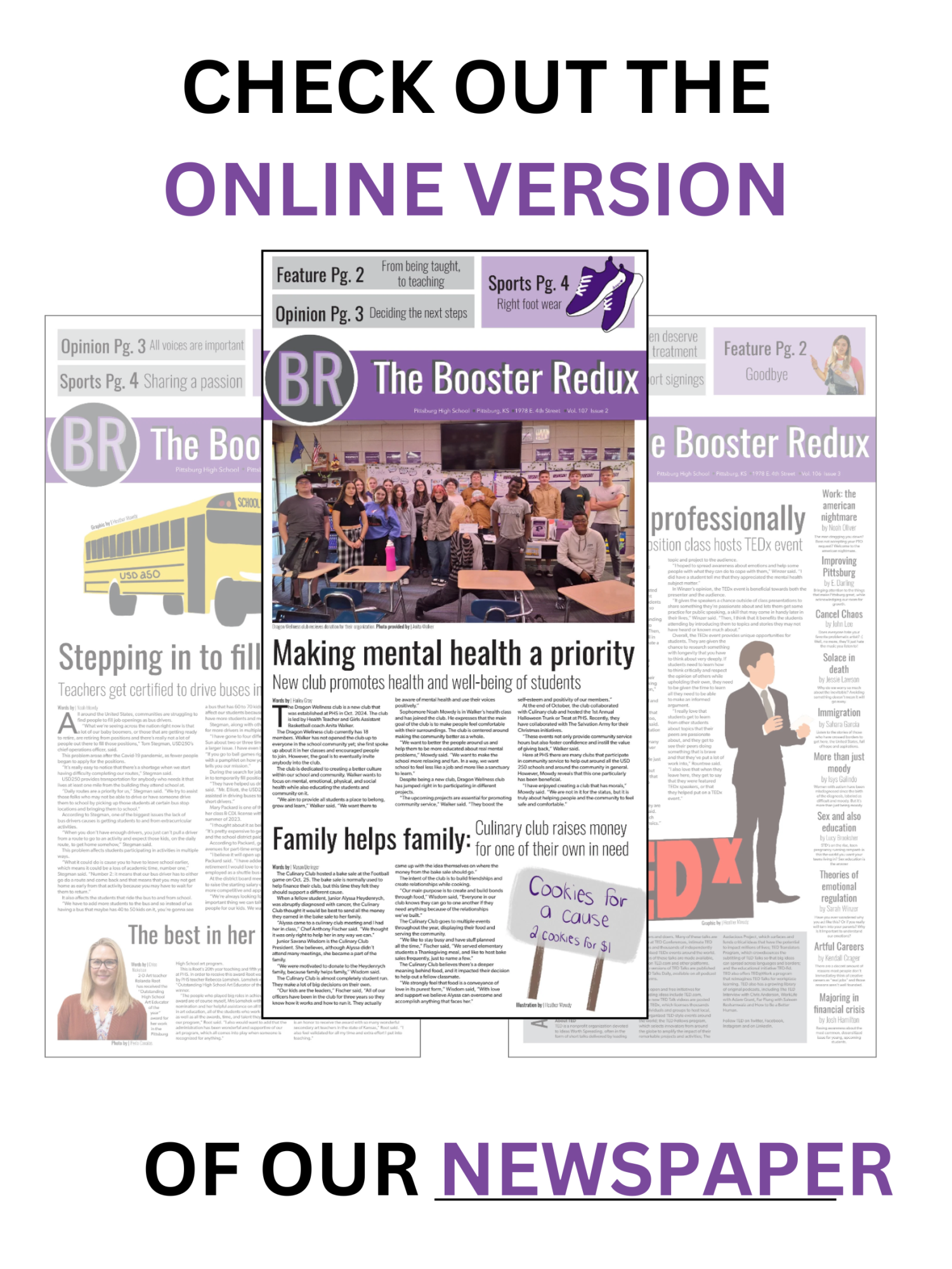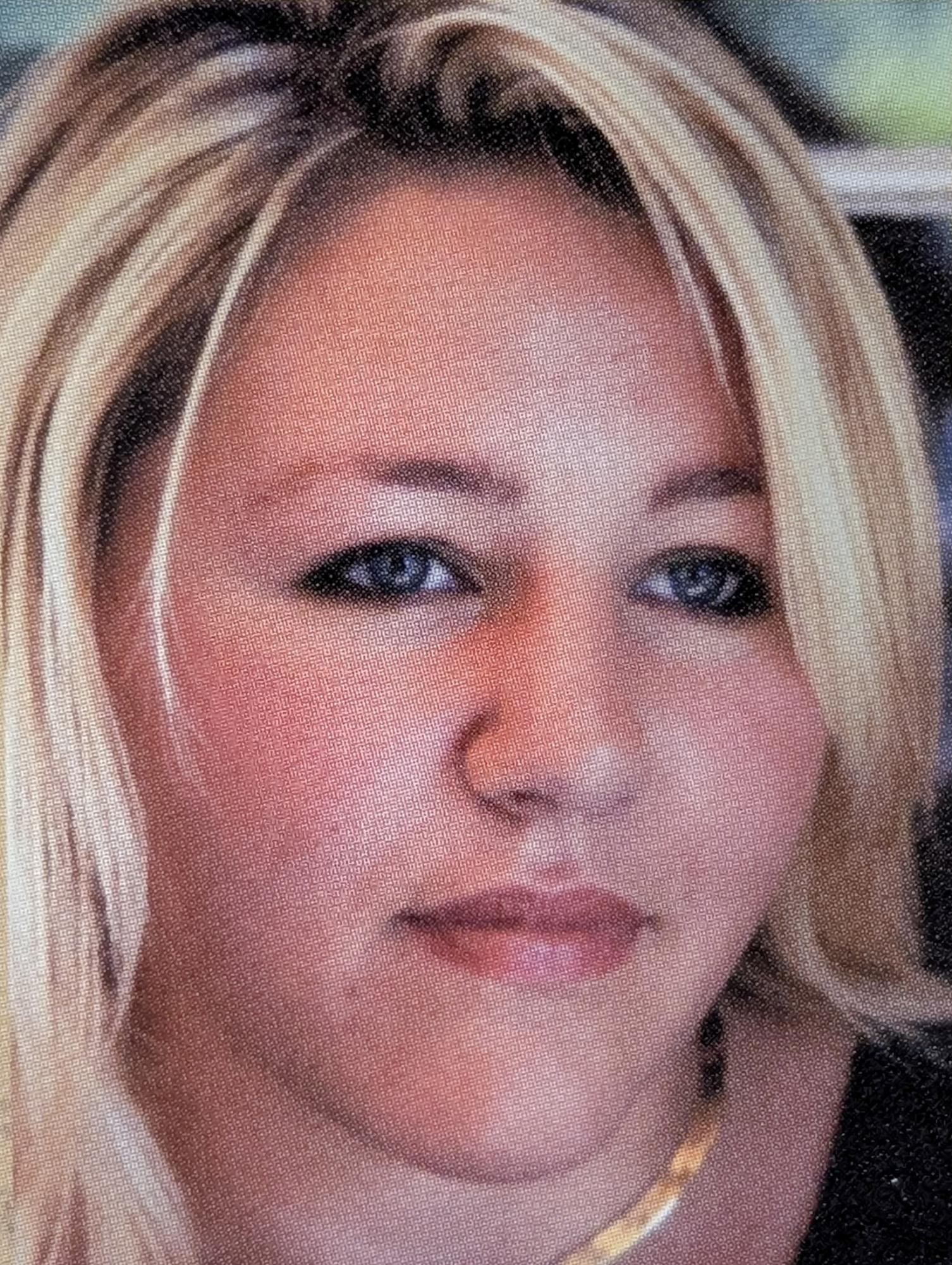Eating away at the debt
District new procedure to address financial concerns
January 22, 2018
Senior Alexis Pichler is an office aide. One of her tasks is delivering notes from the office to students. As she walks in and hands over one specific note in the middle of third hour, she can see the expression change on the students’ faces as they read the piece of paper.
The note from USD 250 states “Your lunch account balance is in the negative more than $25. Until this is addressed, come to the PHS front office for a sack lunch, then the cafeteria for a drink.”
At the end of the 2016-17 school year, 75 percent of school districts in the country were in debt with their lunch accounts, according to the School Nutrition Association.
To alleviate this, the United States Department of Agriculture (USDA) required all districts participating in the National School Lunch or School Breakfast program to have a written policy by July 1, 2017 to reduce the debt.
Taking this new law into consideration, food service director Summer Warren was driven by the USDA’s statement to develop a solution to cut the roughly $50,000 of debt. The debt builds up from students who have outstanding balances who still proceed to purchase a meal, according to assistant superintendent Ronda Fincher.
“This new law from the USDA was on our radar,” Warren said. “We started trying to make our plan on how to approach it. We came up with alternate lunches as a way to cut our expense.”
An alternate lunch, which is served at all six schools in the district, began on Nov. 1 and consists of a sack lunch for students who owe $25 or more in lunch money. Kindergarteners through high school receive the same sack lunch, which is comprised of a Smuckers peanut butter and jelly sandwich, a piece of fruit and milk. If the student has a peanut allergy, the food service workers will replace the peanut butter and jelly with a cheese sandwich.
“We did this to help out with the parents,” Warren said. “If you are a full-pay student at the high school, you are paying $2.80 [for a lunch]. With the sack lunch you are charged $1.50, and it is costing us about $1.25 to make, so the debt is not racking up quite as quickly.”
According to Warren, the debt has declined from $50,000 to $15,000 since the start of the alternate lunches. Any remaining balances in the account by the end of year will have to be paid off from a separate district fund.
Though there is proof from the decrease in debt the alternate lunches are working, students and staff are concerned about the plan of action to decrease the debt.
At the high school, students are notified during third hour every day if they owe $25 or more and need to pick up a sack lunch. Pichler delivered the balance notices every day starting Nov. 1 and according to her, she encountered awkward situations with students and teachers.
“I felt bad [delivering the notes]. Sometimes, I could see the embarrassment of the student just by my presence because it became a routine for me to come in [the class] and deliver the same message every day.” Pichler said. “Peers would make the student receiving the note feel belittled and teachers would become annoyed by the constant reminder and sometimes express that.”
Senior Raul Andres Munguia has been receiving a balance notice since the start of the policy and feels being handed a note or getting a sack lunch is an embarrassing situation for students his age.
“I don’t get shamed, but other people in the school are really embarrassed or get red in the face every time they stop class just to give them the same sheet of paper every single day of the week,” Munguia said. “This is a really small way of shaming, but it is still shaming. The best way to have people pay their debt is by not embarrassing them.”
The thought of the sack lunch shaming a child was not a concern of Fincher, according to her, she felt this was the best way to not single out a student.
“This was really unanimous as a group decision. This is the the best way we could [lower debt] without publicly shaming any child,” Warren said. “We are all here for kids. We don’t come here and try to make anybody’s life more difficult. We just try to make sure we are doing what we are supposed to do, and making sure kids are still getting what they need.”
Science teacher Stuart Perez, whose student received a note every day last semester, realizes debt has increased, but is worried about the mental impact the policy has on kids.
“My concern with the letters is the method and tone of delivery. These are delivered in the middle of class. I choose to wait until the end of class to give the student the note to protect them from any embarrassment that may come from being identified as not being able to eat a normal lunch, due to an outstanding lunch balance,” Perez said. “I believe we are falling short of our mantra, ‘Are we doing what’s best for students?’ when we hand them a letter that puts them in this position.”
The district started sending out letters to homes after they approved the policy in August. Six weeks of letters went out starting the second week of September, in order to get the word out to parents about the negative account balances.
“Negative balance phone calls were going out twice a week,” Warren said. “For parents whose child was more than $10 under in their lunch account, they could count on one letter a week and two phone calls a week. So lots of notice.”
At the beginning of the year, 171 families owed money. Those who responded to the notices either paid the balance or got on a payment plan until the balance was paid off.
“Once they get on a payment plan with us, they go back to regular lunch,” Fincher said. “We don’t want kids to be on alternative any longer than necessary.”
Some students whose families have not contacted the district are still supposed to get a sack lunch, but many continue to go through the lunch line, increasing their debt.
This has become a problem at the high school, according to Nutrition Services Manager Terri Feagan, but the question as to what to do with it is still up in the air.
At the start of the sack lunch program on Nov. 1, 82 students were on the list to receive sacks, but out of the 82 lunches made only 11 were actually picked up. The rest of the lunches are taken back down to the cafeteria and reused since the peanut butter and jellies are prepackaged, according to Feagan.
With this continuing to happen, the amount of sack lunches prepared was dropped.
As of Jan. 8, 40 kids were on the list, and only three sack lunches are made due to many students not picking them up. Also, since Jan. 3, 2018, only one sack lunch has been taken out of the three made daily.
“If [a student] comes through the line and we know they are on the overdue list, we pretty much just let them go because they already have their tray,” Feagan said. “We do not want to embarass them and pull their tray and say ‘oh no you were supposed to go down and get a sack lunch.’ We just do not really say anything.”
According to both Fincher and Warren they believe many families who owe would qualify for the Free and Reduced Lunch Program. If a household falls under the reduced criteria, the debt owed would be reduced, and if they fall under the free criteria, the debt would be eliminated.
“We try to be careful about free and reduced lunch. With the The Family Educational Rights and Privacy Act law (FERPA), [which is a law that protects students’ education records,] we cannot walk the halls and start approaching the people we know who would probably qualify because we do not want to single them out,” Fincher said. “We try to keep that for confidentiality reasons so it is kind of hard sometimes to find them all, but we have tried pretty hard.”


